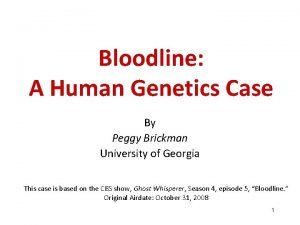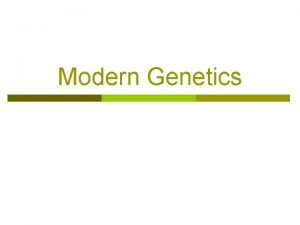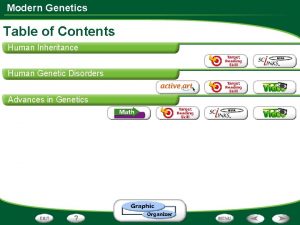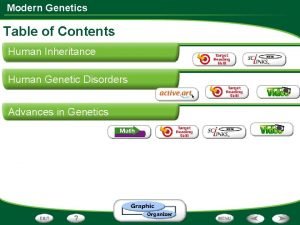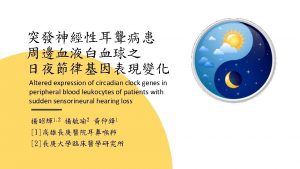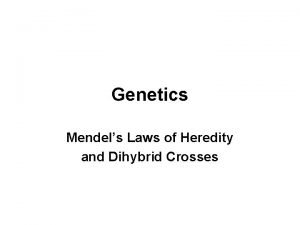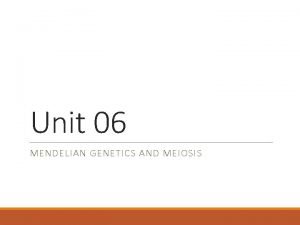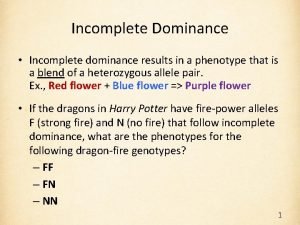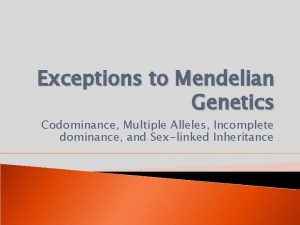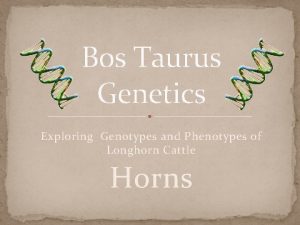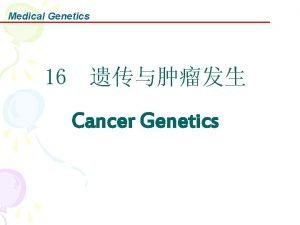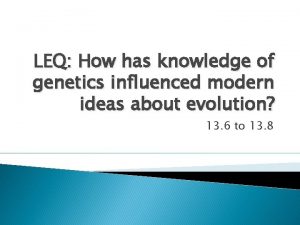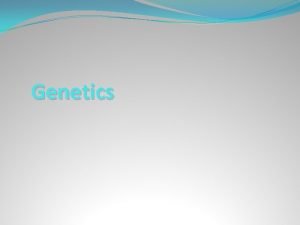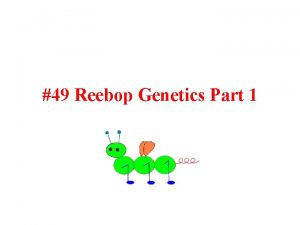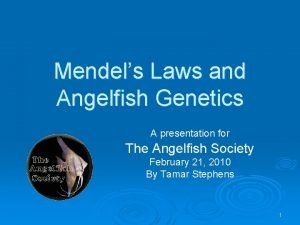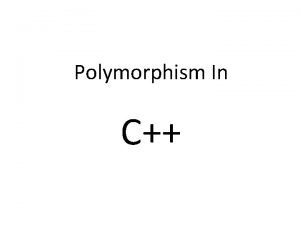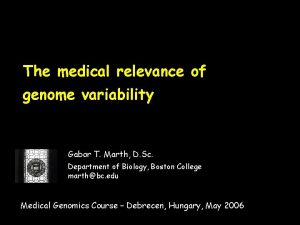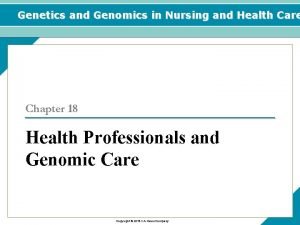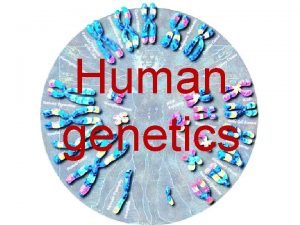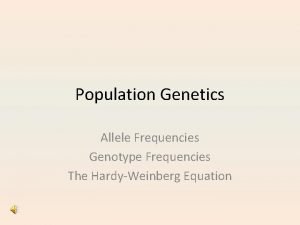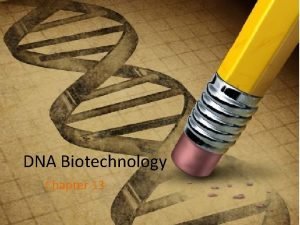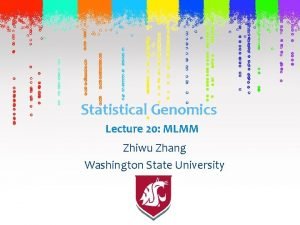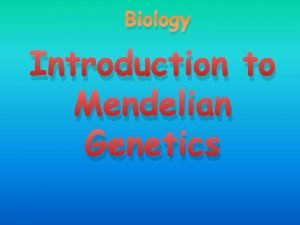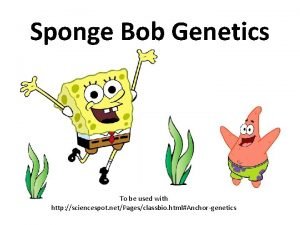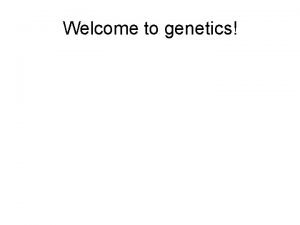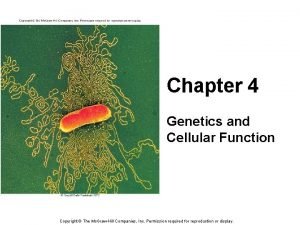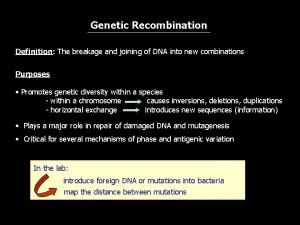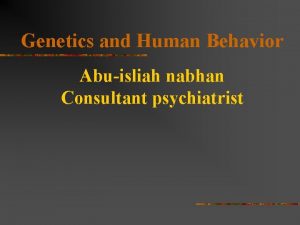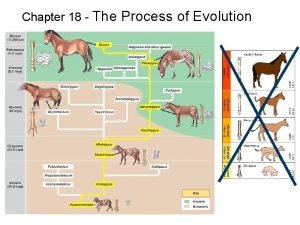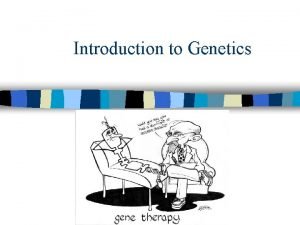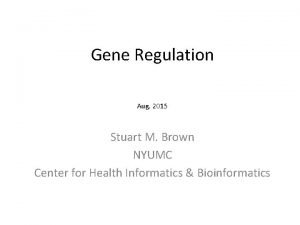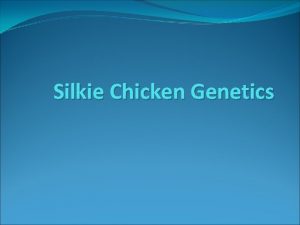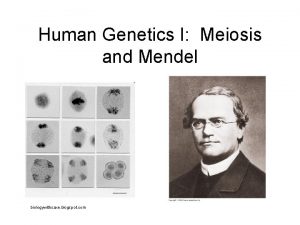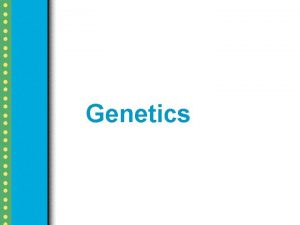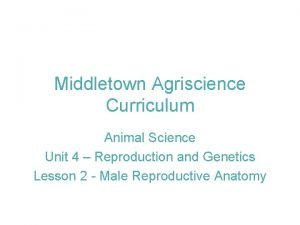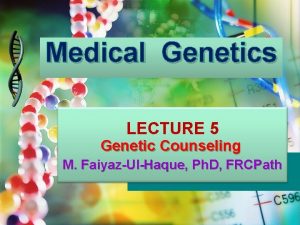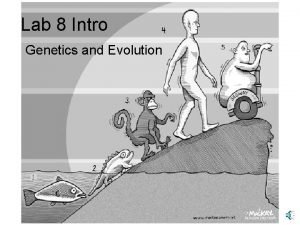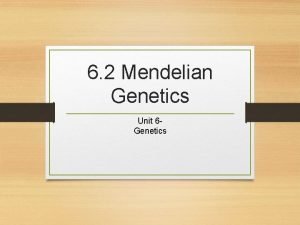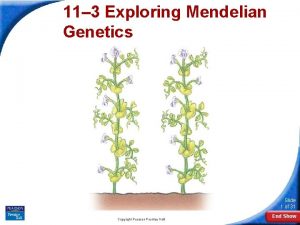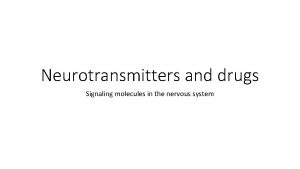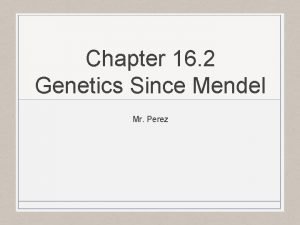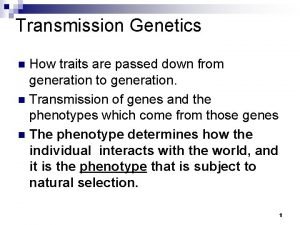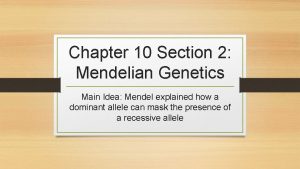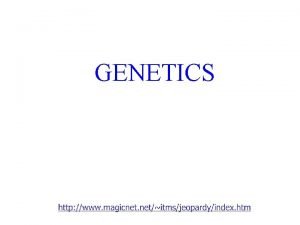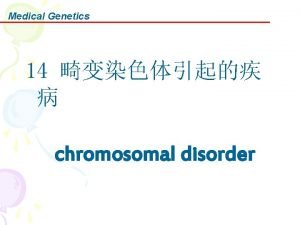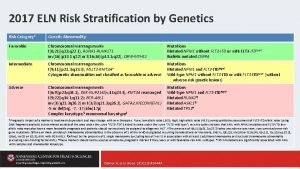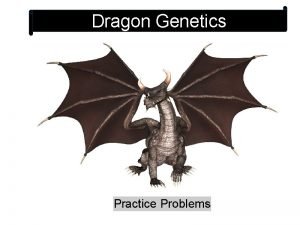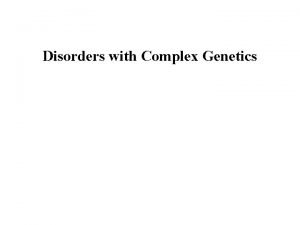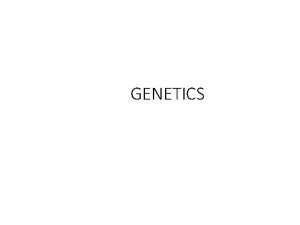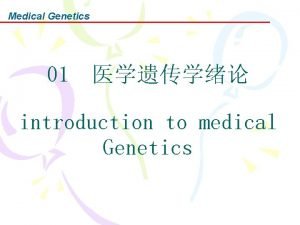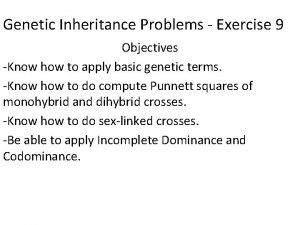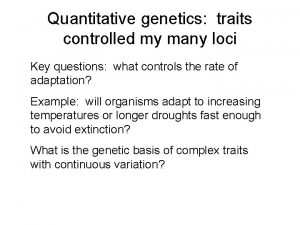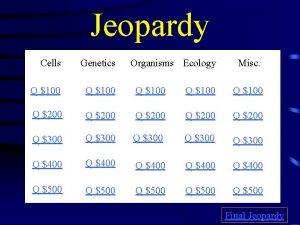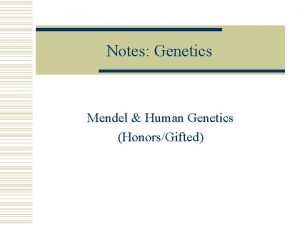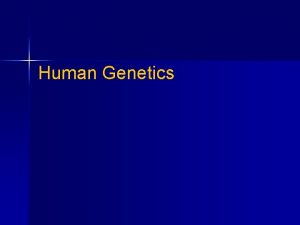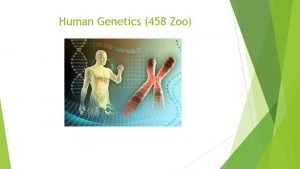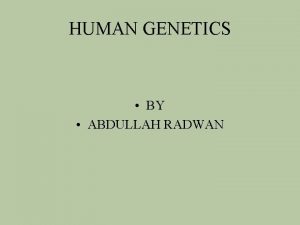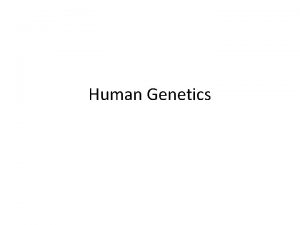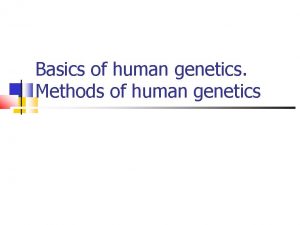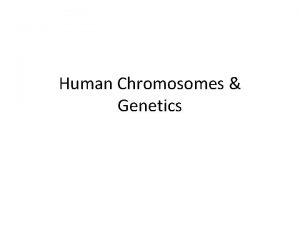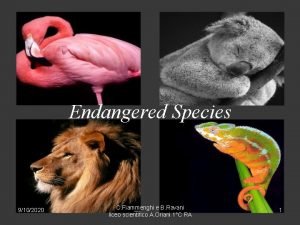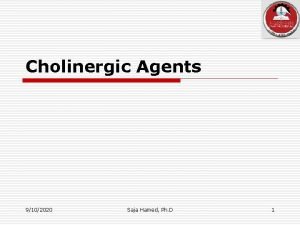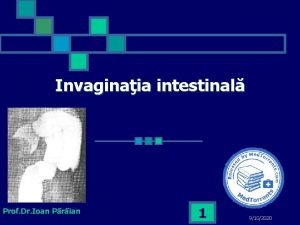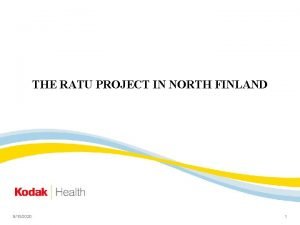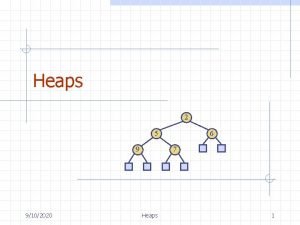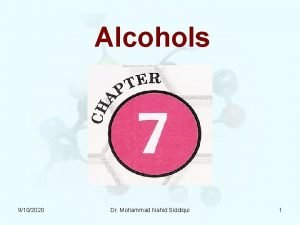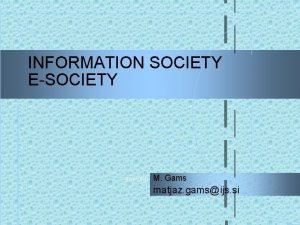Human Genetics 9102020 1 1 Human Genetics 2










































































- Slides: 74

Human Genetics 9/10/2020 1 1

Human Genetics 2

History of Blood Typing Karl Landsteiner • Experiments with blood transfusions had been carried out for hundreds of years. • Mixing blood from two individuals can lead to severe blood clotting (agglutination). • In 1901, Karl Landsteiner discovered that blood clumping occurred because of a difference in the blood antigens and antibodies for each blood type. • His work made it possible to determine blood types and thus paved the way for safe blood transfusions.

Dr. Charles Drew • Today's American Red Cross blood program is the result of the efforts of Dr. Charles R. Drew, a blood specialist, surgeon, educator and scientist. • His pioneering work in blood collection, plasma processing and transfusion laid the foundation for modern blood banking.

Did you Know? • That Drew attended Amherst College in Massachusetts, then medical school at Montreal's Mc. Gill University in Canada. • At Amherst College, Drew received an athletic scholarship and was made captain of the school’s track team and winner of the football team's most valuable player award. • That he made many of his discoveries on blood while doing graduate research at Columbia University in New York City. • That Drew became the first African American to receive a Doctor of Medical Science degree from Columbia University. • That he returned to his hometown of Washington, D. C. , from the Red Cross blood project in New York and continued to teach the next generation of African American doctors as a professor of surgery at Howard University.

Dr. Charles Drew 6

Multiple Alleles Traits that are controlled by more than two alleles. Blood type in humans is controlled by three alleles: A, B, and O Phenotype Genotype A AA or AO B BB or BO AB AB only O OO only • The Universal Recipient can receive blood from any blood type. The • The Universal Donor can donate blood to a person any blood type. The • Which blood type is the Universal Donor? O Which blood type is the Universal Donor? 9/10/2020 • Which blood type is the Universal Recipient? AB Which blood type is the Universal Recipient? + 7

Phenotype/ Blood Type Genotype Meaning ii Neither A nor B antigens are present A IAi or IA IA Only the A antigen is present B IBi or IB IB Only the B antigen is present AB IAIB O 9/10/2020 A & B antigens are present 8

ABO Blood Types 9

Multiple Alleles – Blood Types Examples of Blood type crosses 9/10/2020 10 10

Multiple Alleles – Blood Types 11


What happens when different blood types are mixed? • Not all blood groups are compatible with each other. • Mixing incompatible blood groups leads to blood clumping or agglutination, which is dangerous for individuals. • This occurs because the antibodies of the recipients’ blood attach to the antigens of the donor blood. • The red blood cells are linked together, like bunches of grapes, by the antibodies.

14


Polygenic • Definition: Disease or trait that is under the influence of two or more genes. • Remember that most of the genetics problems that we did only considered one gene for each trait.

Some common polygenic traits • Hair color • Eye color • Tendency to have certain diseases (family history)

Polygenic Traits 18

Family history’s role in polygenic diseases • You don’t inherit things like cancer or heart disease from your parents. • However, your combination of genes may make you more susceptible to certain diseases. • This is due to a combination of factors (inherited genes) instead of one particular gene.

Polygenic Diseases • These diseases are thought to be largely contributed to polygenic inheritance. – – – Cancer Heart disease Diabetes Obesity Autoimmune diseases Hip dysplasia in some dog species is a polygenic trait

21

Human Heredity • Human Chromosomes – each person has 46 chromosomes. • There are two types of human chromosomes: known as sex chromosomes. • Sex Chromosomes determine an individual’s sex. (X-Female) & (Y-Male) 22

Human Heredity • Females have 2 X-chromosomes • Males have 1: X-chromosome 1: Y-chromosome • The remaining 44 chromosomes are called autosomes. • Autosomes: are chromosomes that are not sex chromosomes. 9/10/2020 23

Human Hereditary • In females the egg cells carries a single X chromosome (23 X) • In males: half of the sperm cells carry and X chromosome (23 X) and half carry the Y chromosome (23 Y). • Females Males XX, 46 XY, 46 9/10/2020 24

25

Human Chromosomes • Karyotype – is a set of photographic pictures of chromosomes arranged or grouped in ordered pairs. 26

27

Karyotyping • Karyotype is a picture of a person’s chromosomes, grouped in pairs. • Spectral karyotype has dye added that causes similar chromosomes to be stained the same color.

Normal Female 46, XX

Normal Male, 46 XY

Amniocentesis • a needle is used to extract sloughed off cells from amniotic fluid surrounding fetus. • Cells are then “frozen” at Metaphase so that chromosomes can be paired up

32

Alpha Fetal Protein Test • In cases where there is not a large risk of genetic disorders, a safer alternative is used. • AFP detects proteins in the mother’s blood that is shared with baby. • Proteins can tell tendency for baby to have certain diseases/disorders. • Not as accurate as amniocentesis, but safer

Ultrasound technology • 2 dimensional picture • Bounces sound waves off of the fetus, and projects an image on a screen • New “ 4 D” ultrasounds can show movement and clear pictures of baby’s face.

35

Chromosomal Disorders • Down’s Syndrome (trisomy 21) • Trisomy = extra chromosome • Results in mental retardation, as well as several physical disabilities.

AUTOSOMAL TRISOMIES The only Autosomal Trisomy that is compatible with life is Down Syndrome. 37

Down’s Syndrome • Trisomy 21 • Mental retardation, speech trouble, heart conditions • No Tx

Down’s Syndrome – Trisomy 21 9/10/2020 39 39

Down’s Syndrome – Trisomy 21 40

Down’s Syndrome Trisomy 21

Chromosomal Abnormalities 42

Edward’s Syndrome • Trisomy 18 • Severe mental retardation • Other physical abnormalities

Patau Syndrome • Trisomy 13 • Leads to severe cerebral development problems • Almost always leads to death during infancy • Heart defects

Turner Syndrome • Happens when an X carrying sperm fertilizes an egg with no X. • Girls appear normal until puberty • At maturity, no secondary sex characteristics develop, and woman does not produce an egg.

Kleinfelter’s Syndrome 46, XXY

Klinefelter Syndrome • XXY – extra female sex chromosome • Tall stature, small testicles, and sterile • Most of these men appear normal otherwise

Klinefelter’s Syndrome • XXY • Trisomy of sex chromosomes

Jacobsen’s Syndrome • XYY • More aggressive male • Weak correlation between XYY and prisoners

PKU (phenylketonuria) • Autosomal recessive • Brain degeneration • Tx = avoid phenylalanine

Hemophilia • Sex linked (x linked recessive) • Free bleeding • Tx= transfusion

Hemophilia 52

Human Genetics 3 major Autosomal Disorders 1. Sickle Cell Anemia 2. Cystic Fibrosis 3. Huntington’s Disease 53

Sickle Cell Anemia • Sickle cell anemia is an inherited disease. People who have the disease inherit two copies of the sickle cell gene—one from each parent. • In sickle cell anemia, the red blood cells become to stiff and are shaped like a sickle, or “C. ” The sickled red blood cells tend to stick together and get caught in the blood vessels. 54

55

56

Sickle Cell Anemia 57

58

59

Cystic Fibrosis • Cystic fibrosis causes mucus to become thick and sticky, which can block the normal function of the organs. Most often, the lungs and pancreas are affected. 60

Cystic fibrosis • Cystic fibrosis (also known as CF, is a hereditary disease affecting the exocrine (mucus) glands of the lungs, liver, pancreas, and intestines, causing progressive disability due to multisystem failure. • Thick mucus production results in frequent lung infections. 61

62

63

64

Huntington’s Disease • Huntington's disease, also called Huntington's chorea, chorea major, or HD, is characterized after onset by uncoordinated, jerky body movements and a decline in some mental abilities. The disorder itself isn't fatal, but as symptoms progress, complications reducing life expectancy increase. 65

Huntington’s Disease 66

Colorblindness • Sex linked (x linked recessive) • Difficulty distinguishing between red and green • No Tx

Pedigree • A pedigree chart is a chart which tells someone all of the known phenotypes for an organism and its ancestors, most commonly humans, show dogs, and race horses. 68

Pedigrees • "family tree" which is a form of pedigree chart, which shows the descendants of a particular individual, and thereby highlights sibling and cousin. 69

PEDIGREE CHARTS • A pedigree chart shows a record of the family of an individual. • It can be used to study the transmission of a hereditary condition. It is particularly useful when there are large families and a good family record over several generations. 9/10/2020 70

Pedigree • A series of symbols are used to represent different aspects of a pedigree. Below are the principal symbols used when drawing a pedigree. 9/10/2020 71

Pedigree Symbols 9/10/2020 72

Dominant Gene Pedigree • The following is the action • unaffected parents can have affected offspring • affected progeny are both male and female 9/10/2020 73

Recessive Gene Pedigree 9/10/2020 74
 Bloodline a human genetics case answer key
Bloodline a human genetics case answer key Modern genetics human inheritance answer key
Modern genetics human inheritance answer key Section 14-3 human molecular genetics
Section 14-3 human molecular genetics Human inheritance modern genetics answer key
Human inheritance modern genetics answer key Human genetics concepts and applications 10th edition
Human genetics concepts and applications 10th edition Genetics graphic organizer
Genetics graphic organizer Parkinson's disease genetics
Parkinson's disease genetics Dihybrid cross
Dihybrid cross Genotype punnet square
Genotype punnet square Genetics
Genetics Chapter 10 section 3 gene linkage and polyploidy
Chapter 10 section 3 gene linkage and polyploidy Harry potter genetics incomplete dominance answer key
Harry potter genetics incomplete dominance answer key Xnxn horse
Xnxn horse Gregor mendel
Gregor mendel Taurus genetics
Taurus genetics Genetics
Genetics Extending mendelian genetics answer key
Extending mendelian genetics answer key Genetics model
Genetics model Genetics
Genetics Foil genetics
Foil genetics Forkline method
Forkline method Nature genetics
Nature genetics Reebop genetics
Reebop genetics Angelfish genetics
Angelfish genetics How many autosomes are there in a human sperm? *
How many autosomes are there in a human sperm? * Chapter 12 section 1 dna the genetic material
Chapter 12 section 1 dna the genetic material Test cross definition
Test cross definition What is polymorphism in c
What is polymorphism in c Nature review genetics
Nature review genetics Scope of genetics
Scope of genetics Genetics
Genetics Allelic and genotypic frequencies
Allelic and genotypic frequencies Genetics and biotechnology chapter 13
Genetics and biotechnology chapter 13 Nature genetics
Nature genetics Homoozygous definition
Homoozygous definition Sponge susie roundpants
Sponge susie roundpants Genetics vocabulary review
Genetics vocabulary review Product law genetics
Product law genetics Chapter 22 genetics and genetically linked diseases
Chapter 22 genetics and genetically linked diseases Chin genetics
Chin genetics Meaning of genetic recombination
Meaning of genetic recombination Behavioral genetics consultant
Behavioral genetics consultant The far side comics
The far side comics What is genetics in biology
What is genetics in biology Nature review genetics
Nature review genetics Silkie color genetics
Silkie color genetics Mendelian genetics concept map
Mendelian genetics concept map Do sister chromatids separate in meiosis
Do sister chromatids separate in meiosis What does the notation tt mean to geneticists?
What does the notation tt mean to geneticists? Genetics middletown
Genetics middletown Genetic counseling definition
Genetic counseling definition Similar
Similar Mendelian laws
Mendelian laws Mendelian genetics punnett square
Mendelian genetics punnett square Gregor mendels principles of genetics apply to
Gregor mendels principles of genetics apply to Rainer lehtonen
Rainer lehtonen Section 11-3 exploring mendelian genetics answers
Section 11-3 exploring mendelian genetics answers Excelsior college basic genetics
Excelsior college basic genetics Chapter 10 sexual reproduction and genetics
Chapter 10 sexual reproduction and genetics Http://learn.genetics.utah.edu/content/addiction/
Http://learn.genetics.utah.edu/content/addiction/ Genetics since mendel
Genetics since mendel Transmission genetics
Transmission genetics Chapter 10 section 2: mendelian genetics
Chapter 10 section 2: mendelian genetics Genetics jeopardy
Genetics jeopardy Klinefelter syndrome facial features
Klinefelter syndrome facial features 2017 eln risk stratification by genetics
2017 eln risk stratification by genetics Genetics practice problems answer key
Genetics practice problems answer key Incomplete dominance example
Incomplete dominance example Nature genetics
Nature genetics Extending mendelian genetics chapter 7
Extending mendelian genetics chapter 7 Genetics
Genetics Connate rachitis
Connate rachitis Basic terms in genetics
Basic terms in genetics Achillea millefolium
Achillea millefolium Genetics jeopardy
Genetics jeopardy
